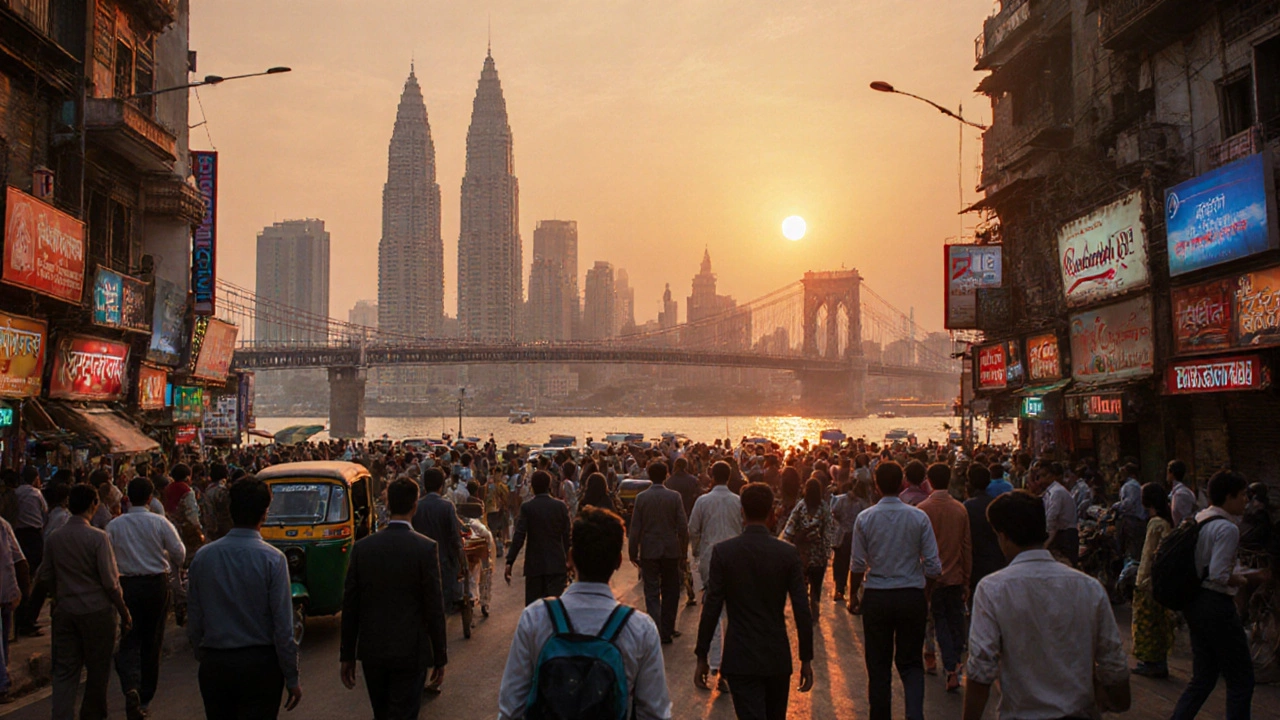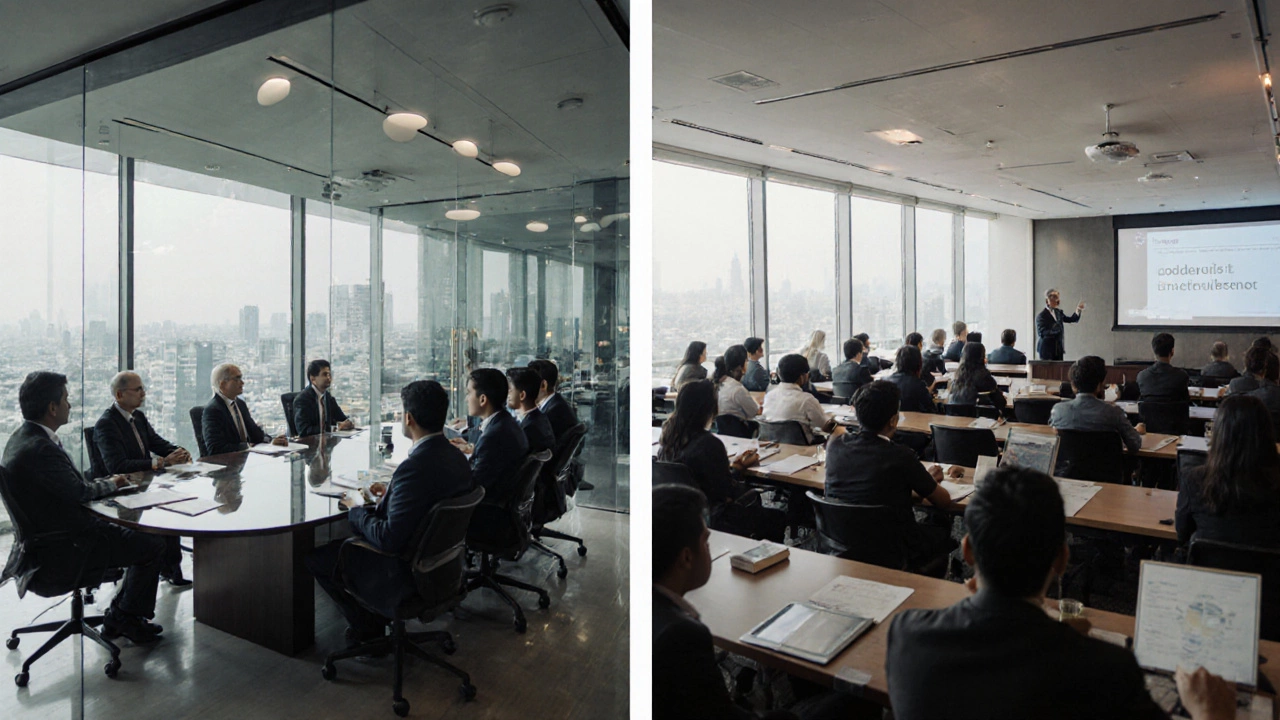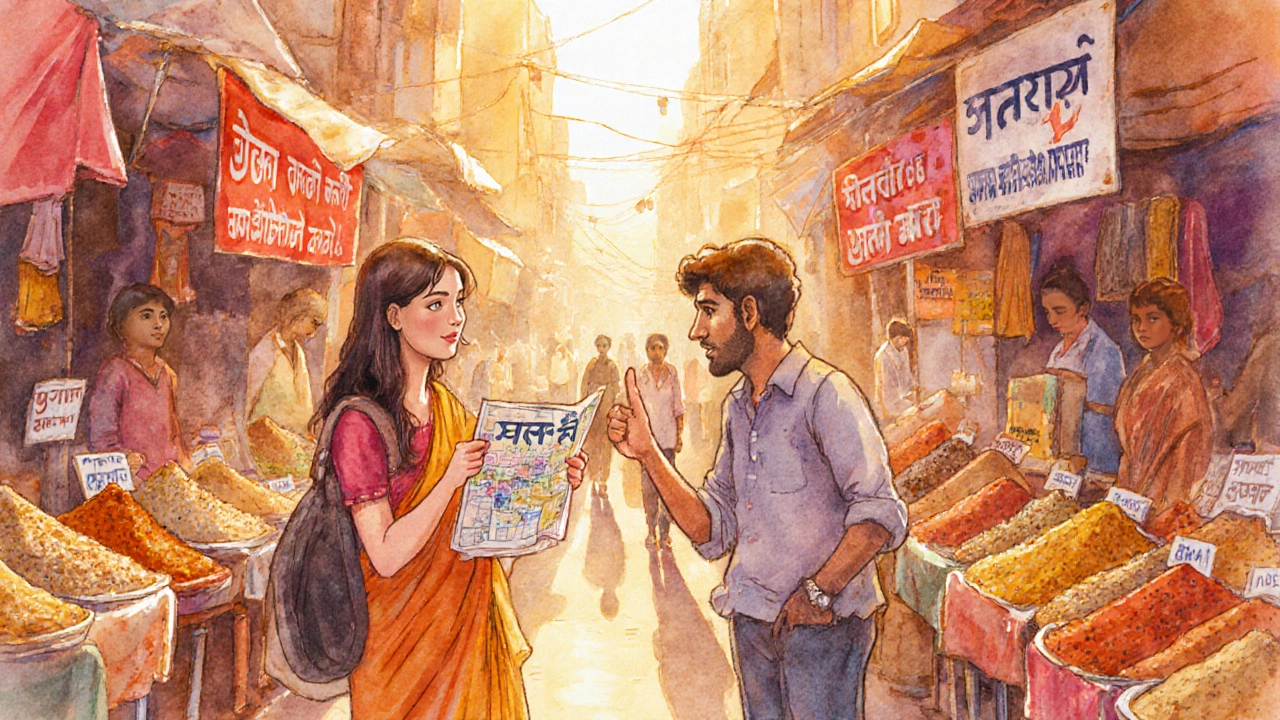Do People in Mumbai Speak English? Facts, Figures, and Practical Tips

Mumbai Language Proficiency Explorer
Estimated English Speakers
35%
of selected group
Language Mix
English
Dominant in business, education, and tech sectors
35-40%Marathi
Official state language, widely used in neighborhoods
55%Hindi
Lingua franca in informal markets and lower-income areas
30%Mumbai is India’s bustling financial capital, home to over 20million residents and a melting‑pot of cultures, religions, and languages. So, does the average Mumbaikar converse in English? The short answer is yes-English is a daily working language for many, but it coexists with Marathi, Hindi, and several regional tongues. This article breaks down where English fits in Mumbai’s linguistic tapestry, who uses it most, and what visitors should know when navigating the city.
Key Takeaways
- English is spoken fluently by roughly 35‑40% of Mumbai’s population, especially in business, education, and tourism.
- Marathi remains the official state language and dominates neighbourhood conversations.
- Hindi acts as a lingua‑franca across the city’s lower‑income areas and informal markets.
- Fluency varies by age, education level, and occupation; younger, college‑educated residents are most comfortable in English.
- Visitors can get by with basic English, but learning a few Marathi greetings smooths interactions.
Language Landscape in Mumbai
According to the 2024 Census of India, Mumbai’s linguistic breakdown looks roughly like this:
| Language | Approx. Share of Population |
|---|---|
| Marathi | 55% |
| Hindi | 30% |
| English | 35‑40% (as a second language) |
| Gujarati | 5% |
| Other regional languages | 10% |
Notice the overlap: many people report bilingual or trilingual abilities. English usually appears as a second or third language, not the mother tongue.
Historical Roots of English in Mumbai
English entered the subcontinent with the British East India Company in the 17thcentury, but it truly took hold after the establishment of Bombay (now Mumbai) as a major port in 1661. British colonial rule spanned from 1858 to 1947, shaping administrative, educational, and legal systems around the English language. Post‑independence, English remained the language of higher education, corporate affairs, and technology, cementing its status as a bridge between India’s many native tongues.

Where You’ll Hear English in Mumbai
English isn’t scattered randomly; it clusters in specific spheres:
- Corporate offices and financial districts - The Bandra‑Kurla Complex (BKC) and Nariman Point run almost entirely in English, from boardrooms to email threads.
- Higher education institutions - Universities like the University of Mumbai, IIT Bombay, and NMIMS deliver most lectures in English, especially in engineering and management programs.
- Tourist hotspots - Hotels, restaurants, and guided tours cater to international visitors, so menus and signs are bilingual, with English taking priority.
- Media and advertising - Billboards, TV channels (e.g., NDTV), and social media influencers often switch between Hindi, Marathi, and English, creating a distinctive “code‑mix” style.
In contrast, residential neighbourhoods such as Dharavi or Govandi rely heavily on Marathi and Hindi for daily chatter.
Demographic Variations in English Fluency
Several factors shape who speaks English comfortably:
- Age - Millennials and Gen‑Z, raised after the liberalisation of the 1990s, exhibit the highest English proficiency, with many using it as their primary language at work.
- Education level - Individuals holding a bachelor’s degree or higher are 2‑3times more likely to be fluent, thanks to English‑medium schooling.
- Occupation - Professionals in IT, finance, and media sectors use English daily; service‑industry workers (e.g., domestic helpers, street vendors) lean on Marathi or Hindi.
- Socio‑economic status - Higher‑income families often send children to English‑medium schools, reinforcing the cycle of fluency.
These patterns explain why a visitor might encounter fluent English in a high‑rise office but hear Marathi being shouted in a local market.
How English Shapes Daily Life
English’s reach influences everything from public services to social interactions:
- Government forms and official notices are usually available in both Marathi and English.
- Public transportation announcements are multilingual, but train station signs feature English prominently.
- Healthcare providers in private hospitals communicate in English, while government clinics may default to Marathi.
For many Mumbaikars, switching between languages within a single conversation-known as “code‑switching”-is normal. A typical sentence might start in Marathi, slip into English for a technical term, and end in Hindi.

Practical Tips for Visitors
If you’re planning a trip to Mumbai, here’s how to navigate the language maze:
- Start with English - In hotels, airports, and major attractions, staff will understand and respond in English.
- Learn a few Marathi basics - Phrases like “Namaskar” (hello) and “Dhanyavaad” (thank you) earn goodwill and can smooth barter negotiations.
- Use translation apps - Google Translate now supports offline Marathi, which helps in dense markets.
- Pay attention to context - In upscale boutiques, English is expected; in street food stalls, a blend of Hindi and Marathi is more common.
Remember, the city’s linguistic fluidity is part of its charm. A smile and a genuine effort to greet locals in their language go a long way.
Comparing English with Other Languages in Mumbai
| Attribute | English | Marathi | Hindi |
|---|---|---|---|
| Official Status | Secondary official language (nation‑wide) | State official language (Maharashtra) | Official language of India (alongside English) |
| Primary Domains | Business, higher education, tech | Local administration, cultural events | Mass media, informal trade |
| Typical Speakers | College‑educated professionals | Broad cross‑section of residents | Wide demographic, especially lower‑income groups |
| Common Settings | Offices, universities, tourist sites | Neighborhoods, local markets, festivals | Street vendors, public transport announcements |
These contrasts illustrate why English feels dominant in certain pockets while Marathi and Hindi retain deep roots across the city.
Frequently Asked Questions
Is English taught in Mumbai schools?
Yes. Most private schools follow an English‑medium curriculum, and many government schools offer English as a second language from primary grades onward.
Can I get by with only Hindi when visiting Mumbai?
You can manage in many informal settings, but English becomes essential in hotels, airports, and upscale dining. Carrying a few English phrases helps avoid misunderstandings.
Do local residents mix English with Marathi or Hindi?
Absolutely. Code‑switching is common; a conversation may flow between Marathi, Hindi, and English within a few seconds, especially among younger people.
Which neighborhoods have the highest English proficiency?
Affluent areas like Bandra, Juhu, and the Business District (BKC) show the highest English fluency, largely due to professional demographics and international schools.
How does English affect job prospects in Mumbai?
Fluency in English dramatically expands job opportunities, especially in IT, finance, media, and multinational corporations. Employers often list “good English communication” as a mandatory skill.
In short, English is a vital thread in Mumbai’s linguistic fabric, but it weaves together with Marathi, Hindi, and countless regional languages to create the city’s unique soundscape. Whether you’re negotiating a business deal, ordering street food, or chatting with locals, understanding this multilingual mix will make your Mumbai experience richer and more authentic.

Post-Comment